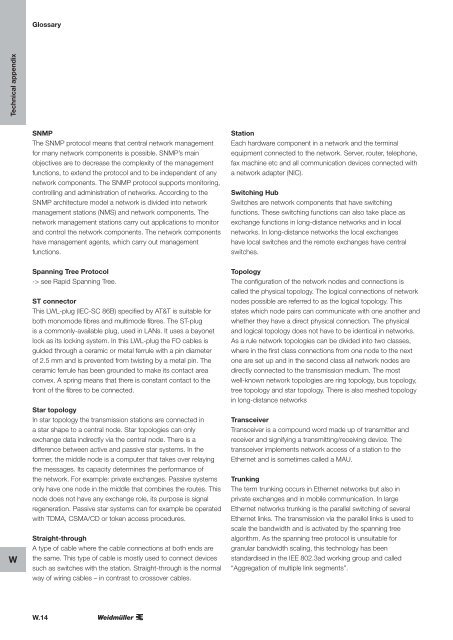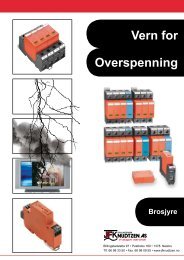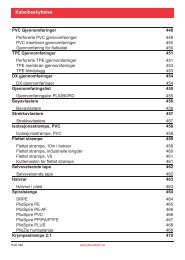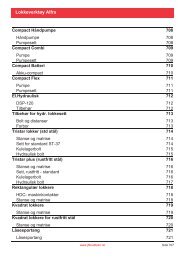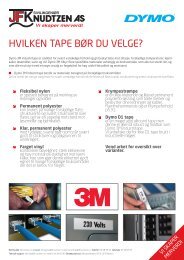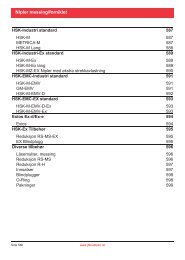Industrial Ethernet
Industrial Ethernet
Industrial Ethernet
You also want an ePaper? Increase the reach of your titles
YUMPU automatically turns print PDFs into web optimized ePapers that Google loves.
GlossaryTechnical appendixSNMPThe SNMP protocol means that central network managementfor many network components is possible. SNMP’s mainobjectives are to decrease the complexity of the managementfunctions, to extend the protocol and to be independent of anynetwork components. The SNMP protocol supports monitoring,controlling and administration of networks. According to theSNMP architecture model a network is divided into networkmanagement stations (NMS) and network components. Thenetwork management stations carry out applications to monitorand control the network components. The network componentshave management agents, which carry out managementfunctions.StationEach hardware component in a network and the terminalequipment connected to the network. Server, router, telephone,fax machine etc and all communication devices connected witha network adapter (NIC).Switching HubSwitches are network components that have switchingfunctions. These switching functions can also take place asexchange functions in long-distance networks and in localnetworks. In long-distance networks the local exchangeshave local switches and the remote exchanges have centralswitches.WSpanning Tree Protocol-> see Rapid Spanning Tree.ST connectorThis LWL-plug (IEC-SC 86B) specified by AT&T is suitable forboth monomode fibres and multimode fibres. The ST-plugis a commonly-available plug, used in LANs. It uses a bayonetlock as its locking system. In this LWL-plug the FO cables isguided through a ceramic or metal ferrule with a pin diameterof 2.5 mm and is prevented from twisting by a metal pin. Theceramic ferrule has been grounded to make its contact areaconvex. A spring means that there is constant contact to thefront of the fibres to be connected.Star topologyIn star topology the transmission stations are connected ina star shape to a central node. Star topologies can onlyexchange data indirectly via the central node. There is adifference between active and passive star systems. In theformer, the middle node is a computer that takes over relayingthe messages. Its capacity determines the performance ofthe network. For example: private exchanges. Passive systemsonly have one node in the middle that combines the routes. Thisnode does not have any exchange role, its purpose is signalregeneration. Passive star systems can for example be operatedwith TDMA, CSMA/CD or token access procedures.Straight-throughA type of cable where the cable connections at both ends arethe same. This type of cable is mostly used to connect devicessuch as switches with the station. Straight-through is the normalway of wiring cables – in contrast to crossover cables.TopologyThe configuration of the network nodes and connections iscalled the physical topology. The logical connections of networknodes possible are referred to as the logical topology. Thisstates which node pairs can communicate with one another andwhether they have a direct physical connection. The physicaland logical topology does not have to be identical in networks.As a rule network topologies can be divided into two classes,where in the first class connections from one node to the nextone are set up and in the second class all network nodes aredirectly connected to the transmission medium. The mostwell-known network topologies are ring topology, bus topology,tree topology and star topology. There is also meshed topologyin long-distance networksTransceiverTransceiver is a compound word made up of transmitter andreceiver and signifying a transmitting/receiving device. Thetransceiver implements network access of a station to the<strong>Ethernet</strong> and is sometimes called a MAU.TrunkingThe term trunking occurs in <strong>Ethernet</strong> networks but also inprivate exchanges and in mobile communication. In large<strong>Ethernet</strong> networks trunking is the parallel switching of several<strong>Ethernet</strong> links. The transmission via the parallel links is used toscale the bandwidth and is activated by the spanning treealgorithm. As the spanning tree protocol is unsuitable forgranular bandwidth scaling, this technology has beenstandardised in the IEE 802.3ad working group and called“Aggregation of multiple link segments”.W.14


